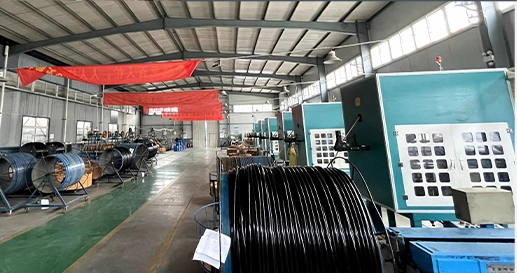Understanding the Importance of Brake Lines and Hoses in Vehicle Safety and Performance
Understanding Brake Lines and Hoses Essential Components of Vehicle Safety
When we think about vehicle safety, we often focus on aspects like airbags, seat belts, and anti-lock braking systems. However, one crucial yet often overlooked component that plays a vital role in ensuring safe braking performance is the brake lines and hoses. These components are essential to the hydraulic brake system, and understanding their function, types, and maintenance can contribute significantly to vehicle safety and performance.
The Role of Brake Lines and Hoses
Brake lines and hoses are part of the hydraulic system that enables the brake pedal to effectively engage the braking mechanism. When a driver presses the brake pedal, the motion generates hydraulic pressure in the brake fluid. This pressure travels through the brake lines and hoses, which then activates the brake calipers and, ultimately, the brake pads against the rotors, bringing the vehicle to a stop.
Brake lines are typically made of rigid metal, such as steel or copper, which provides durability and can withstand high pressure. On the other hand, brake hoses are flexible and are made from rubber or reinforced materials, allowing them to move with the movement of the suspension while also accommodating the vehicle's design.
Types of Brake Lines and Hoses
There are primarily two types of brake lines solid metal lines and flexible rubber hoses
.1. Solid Metal Brake Lines These are generally used in areas of the vehicle where there is no significant movement, such as along the chassis. They are designed to be durable and resist corrosion, ensuring long-lasting performance.
2. Flexible Rubber Brake Hoses These hoses are crucial in connecting various parts of the braking system, especially in places where motion and flexing occur, such as between the wheel and the frame. Rubber hoses are usually reinforced with layers of braided fiber or steel to provide strength while remaining flexible.
brake lines and hoses

Signs of Wear and Damage
Just like any vehicle component, brake lines and hoses can wear out over time. Regular inspection is necessary to ensure their proper functioning. Some common signs of wear include
- Leaking Brake Fluid Puddles of brake fluid under the vehicle or damp spots on the lines indicate a possible leak. - Cracks or Bulges Any visible damage in the rubber hoses should be addressed immediately, as it can lead to brake failure.
- Soft or Spongy Brake Pedal If the brake pedal feels soft or spongy, it might indicate air in the system or a leak in the brake lines.
Maintenance and Replacement
Preventative maintenance is key to ensuring the longevity of brake lines and hoses. Regularly checking for signs of wear, corrosion, and leaks can prevent costly repairs and keep the braking system functioning optimally. If any issues are detected, replacement should be performed as soon as possible to prevent brake failure.
It is recommended to replace rubber brake hoses every six to ten years, depending on the manufacturer’s guidelines, because they can degrade over time due to exposure to heat, moisture, and road chemicals.
Conclusion
In summary, brake lines and hoses play an indispensable role in the hydraulic brake system, directly impacting vehicle safety. Understanding the functions, types, and maintenance of these components can help vehicle owners take proactive measures to ensure their braking system operates effectively. Regular inspections and timely replacements not only enhance safety but also contribute to a smoother and more reliable driving experience. As with any vehicle maintenance task, staying informed and vigilant about brake lines and hoses is crucial for every driver.
-
Ultimate Spiral Protection for Hoses & CablesNewsJun.26,2025
-
The Ultimate Quick-Connect Solutions for Every NeedNewsJun.26,2025
-
SAE J1401 Brake Hose: Reliable Choice for Safe BrakingNewsJun.26,2025
-
Reliable J2064 A/C Hoses for Real-World Cooling NeedsNewsJun.26,2025
-
Heavy-Duty Sewer Jetting Hoses Built to LastNewsJun.26,2025
-
Fix Power Steering Tube Leaks Fast – Durable & Affordable SolutionNewsJun.26,2025

